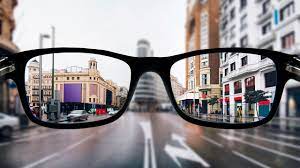Myopia is a refractory alteration of the eye due to which it is unable to correctly focus on distant objects, causing the subject to have a blurred and poorly defined vision of their shapes.
Myopia is transmitted from myopic parents to their children, although it can also affect people with no family history.
In addition to glasses and contact lenses, there are other means to correct this visual defect.
In the process of normal vision, the light rays that enter the eye undergo a refraction process through the cornea and the lens. In this process, the rays are focused exactly on the retina, which causes clear vision and perfect perception of the object.
However, in the myopic eye, the refraction process is impaired, causing light to focus just in front of the retina. The further away from the retina the focusing process is with respect to the retina, the more difficult it is to perceive the image (more diopters). This is mainly due to two possible causes:
- The cornea is too curved.
- The eyeball is too big.
Typical symptoms of myopia are:
- Difficulty distinguishing objects due to having a blurred vision of them; by squinting (“squinting” the eyes) the details are seen more clearly.
- Intense eye fatigue with redness.
- Headaches.







